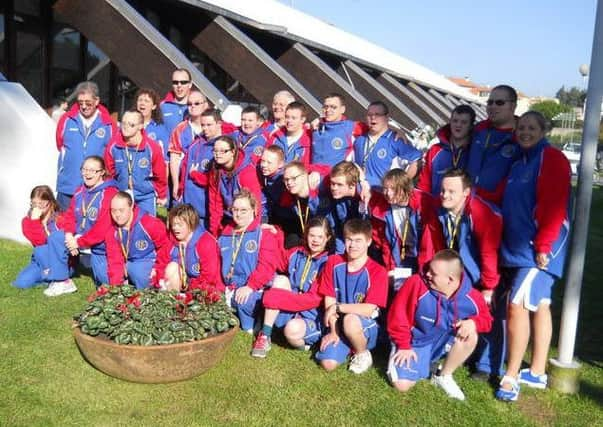People with Down's syndrome are being let down by the Paralympics


They have been admired for their ability and sporting achievements and their “disability” has become almost as irrelevant as the colour of their hair. This doesn’t mean that their “disadvantages” compared to our idea of normal was ignored or forgotten, but more that we have all seen that achievement is not exclusive to one sector of the population. This has meant that our Paralympians have been role models to everyone – we have seen what can be done rather than what can’t.
It was also good to see that Learning Disability was reintroduced into the Paralympic Games in London after an absence of 12 years. A scandal in the Sidney Games in 2000 highlighted an issue with control of who qualified for this category, and “the only way” to sort the problem was to remove the category entirely and consign two generations of athletes who could adequately meet the criteria to the sidelines.
Advertisement
Hide AdAdvertisement
Hide AdDown’s syndrome represents the largest single grouping of people with a learning disability. The blanket ban on learning disability denied athletes with Down’s the opportunity to compete on a world stage and project a positive image for the most part lacking elsewhere. Following the ban on learning disability competitors a movement was started to provide competitive opportunities outside the Olympic and Paralympic movement.
Down’s syndrome-only competitions were established, with swimming, in particular, taking the lead – the 8th World Downs Syndrome Swimming Championships were held in Florence this year. This movement has grown while wholly funded by parents, carers and their fundraising activities. The competitions provide a level playing field for athletes with Down’s syndrome.
We have all been learning through the Paralympics about how the categories work, most of us are still trying to work it out. For the most part they endeavour to establish the relative disadvantage a competitor has and groups them to even out the playing field, and for anything other than a complex disability this undoubtedly works. But where the only opening for competitors with Down’s syndrome is Learning Disability there is an inbuilt problem.
Although simplistic there is a way to illustrate this. The average height of someone with Down’s syndrome is 4ft 10in for a woman, 5ft 3in for a man. The average height for someone with a learning disability is the population average of 5ft 3in for women and 5ft 9in for men. In swimming, for instance, height is an advantage – what are the chances of a “tall” Downs Syndrome swimmer managing to make the top three in the British Paralympic swimming squad?
And there are many other areas where Downs syndrome affects someone – muscle type, oxygen absorption in the lungs, heart defects to name but three.
There are, of course, arguments as to why the Paralympics can’t have categories for “everything” but a category for such a large sector of the world’s population is surely worthy of consideration. It would be good to let the current generation dream of a Paralympic podium.
Kim Marshall, parent member of Down’s Syndrome Scotland